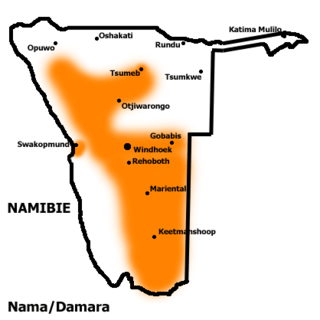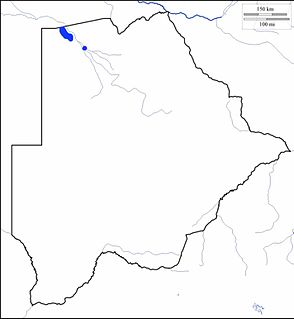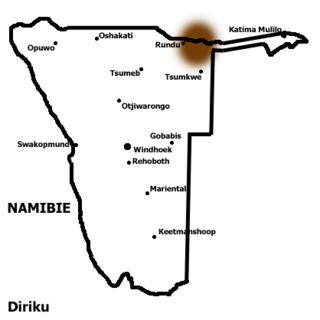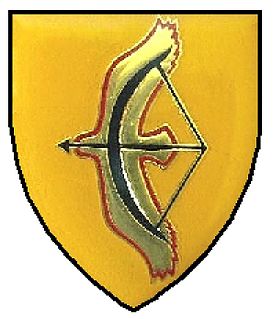| !Kung | |
|---|---|
| Ju | |
| !Xun | |
| Native to | Namibia, Angola, South Africa, [1] Botswana [2] |
| Ethnicity | !Kung |
Native speakers | 20,200 (2013) [2] |
Kx'a
| |
| Dialects |
|
| Language codes | |
| ISO 639-3 | Variously: knw – Ekoka !Kung vaj – Sekele ktz – Juǀʼhoansi |
| Glottolog | juku1256 [3] |
!Kung /ˈkʊŋ/ (!Xun), also known as Ju,{{refn| group =nb |The term !Kung is typically used when considering the dialects to constitute a single language; Ju tends to be used when considering them as a small language family. The term !Kung is also sometimes used for the northern or northern and western dialects, as opposed to the well documented Ju{{|}}ʼhoan dialects in the southeast; however speakers of nearly all dialects call themselves !Kung. The spellings !Xun and '!Xuun seen in recent literature are related to the Ju{{|}}ʼhoan form spelled ǃX’u(u)n in the 1975 orthography,, since 1994, it has been spelled ǃKu(u)n.
Additional spellings of !Kung are ǃHu, ǃKhung, ǃKu, Kung, Qxü, ǃung, ǃXo, Xû, ǃXû, Xun, ǃXung, ǃXũũ, !Xun, ʗhũ:, [4] and additional spellings of Ju are Dzu, Juu, Zhu.}} is a dialect continuum (language complex) spoken in Namibia, Botswana, and Angola by the ǃKung people. Together with the ǂ’Amkoe language, it forms the proposed Kx'a language family. !Kung constituted one of the branches of the putative Khoisan language family, and was called Northern Khoisan in that scenario, but the unity of Khoisan has never been demonstrated and is suspected to be spurious. Nonetheless, the term "Khoisan" has been retained as an umbrella term for click languages in general. [5]
A dialect continuum or dialect chain is a spread of language varieties spoken across some geographical area such that neighbouring varieties differ only slightly, but the differences accumulate over distance so that widely separated varieties are not mutually intelligible. That happens, for example, across large parts of India or the Arab world (Arabic). Historically, it also happened in various parts of Europe such as between Portugal, southern Belgium (Wallonia) and southern Italy and between Flanders and Austria. Leonard Bloomfield used the name dialect area. Charles F. Hockett used the term L-complex. It is analogous to a ring species in evolutionary biology.

Namibia, officially the Republic of Namibia, is a country in southern Africa. Its western border is the Atlantic Ocean; it shares land borders with Zambia and Angola to the north, Botswana to the east and South Africa to the south and east. Although it does not border Zimbabwe, less than 200 metres of the Zambezi River separates the two countries. Namibia gained independence from South Africa on 21 March 1990, following the Namibian War of Independence. Its capital and largest city is Windhoek, and it is a member state of the United Nations (UN), the Southern African Development Community (SADC), the African Union (AU), and the Commonwealth of Nations.

Botswana, officially the Republic of Botswana, is a landlocked country in Southern Africa. Formerly the British protectorate of Bechuanaland, Botswana adopted its new name after becoming independent within the Commonwealth on 30 September 1966. Since then, they maintain a tradition of stable representative republic, with a consistent record of uninterrupted democratic elections and the best perceived corruption ranking in Africa since at least 1998. It is currently Africa's oldest continuous democracy.
Contents
!Kung is famous for having a large number of clicks, such as the ǃ in its name, and has some of the most complex inventories of both consonants and vowels in the world. It also has tone. For a description, see Juǀʼhoansi. To pronounce !Xuun (pronounced [!͡χũː˦˥] in Western !Kung/!Xuun) one makes a click sound before the x sound (which is like a Scottish or German ch), followed by a long nasal u vowel with a high rising tone. [nb 1]
Click consonants, or clicks, are speech sounds that occur as consonants in many languages of Southern Africa and in three languages of East Africa. Examples familiar to English-speakers are the Tut-tut or Tsk! Tsk! used to express disapproval or pity, the tchick! used to spur on a horse, and the clip-clop! sound children make with their tongue to imitate a horse trotting.
The alveolar or postalveolar clicks are a family of click consonants found only in Africa and in the Damin ritual jargon of Australia. The tongue is more or less concave, and is pulled down rather than back as in the palatal clicks, making a hollower sound than those consonants.

In articulatory phonetics, a consonant is a speech sound that is articulated with complete or partial closure of the vocal tract. Examples are, pronounced with the lips;, pronounced with the front of the tongue;, pronounced with the back of the tongue;, pronounced in the throat; and, pronounced by forcing air through a narrow channel (fricatives); and and, which have air flowing through the nose (nasals). Contrasting with consonants are vowels.











